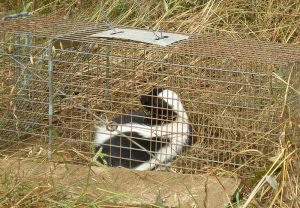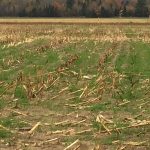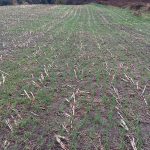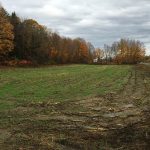Cows and Crops
By Rick Kersbergen, Extension Professor, University of Maine Cooperative Extension, richard.kersbergen@maine.edu
“Cows and Crops” was the title of a newsletter that used to be produced by dairy specialists when I first began my Extension career. When I was in school, I thought that the information and the experiences that were shared by the Extension team at that time was what I wanted to do for a career. Well quite a few years later, here I am about to share some of my experiences as part of a sabbatical for the next six months!
 So how does one “go on sabbatical?” I have asked myself this question quite a few times during my first two weeks on my new adventure. Based on what I have done so far, it is harder for someone like me than most would think. I began my first day of sabbatical dealing with a visitor in my yard … hopefully this was not an omen and the rest of the adventure goes better!
So how does one “go on sabbatical?” I have asked myself this question quite a few times during my first two weeks on my new adventure. Based on what I have done so far, it is harder for someone like me than most would think. I began my first day of sabbatical dealing with a visitor in my yard … hopefully this was not an omen and the rest of the adventure goes better!
Trying to extract oneself (and the skunk in the trap) from more than 28 years of Extension work is difficult. Grant funded projects still go on, the growing season research data still needs to be processed, and finding ways to tell clients “I’m not available” for the next 6 months can be harder than you think! My plans to clean up my office before I leave have also gone unfulfilled.
Our Waldo County Executive Committee President, Sara Trunzo, suggested I write a blog to help keep in touch and share my experiences. I am hoping that the blog will also serve to help me organize my experiences as well as help me reflect on what I learn and accomplish. (Isn’t that what sabbatical is all about?)
So, what are my plans for the next six months?
I will soon be leaving for Europe for several weeks to investigate pasture-based dairy operations in the Netherlands and Germany. This is part of my involvement with Wolfe’s Neck Farm and their new initiative to develop an organic teaching and research facility in Freeport. I hope to be able to bring back some good information regarding equipment and facilities that can be used as Wolfe’s Neck develops their infrastructure needs. I will also be working to help them initiate a research program using the vast natural resources they have available for grass based livestock production. Oh … did I mention the nearly 60 first cousins I have in the Netherlands? I think I will have to do a lot of family visits!
Before I leave, I wanted to give a big “shout out” to all the Maine dairy farmers that have gone the extra mile to plant cover crops this fall. As many of you know, I have been working with many farms to help them implement cover cropping practices and reduced tillage on the corn silage acres they grow for feed for their cattle. This practice has been part of a SARE funded project that ended last year. You can read about the report at the SARE website.
While the grant project ended, more and more farmers have started cover cropping as a means to improve soil health and reduce negative environmental impacts. Cover cropping takes additional effort by growers and involves additional expense. The benefits are long term and are not only for the farmers but for society as well, with reduced erosion and nutrient run-off. As I leave for sabbatical, my co-worker Caragh Fitzgerald and I received word of a successful grant application to continue research with growers in Kennebec, Waldo, and Somerset counties on cover crop practices and soil quality impacts. We have enlisted almost 15 farms that will adopt new cover cropping practices and techniques. Part of this project involves investigating methods to sow cover crops. Here are some pictures of some of the options from this year’s season and some recognition for the farmers who are doing this good work.
- Aerial seeding by helicopter in August 2014 in standing corn, Misty Meadows Farm in Clinton, Maine.
- No-till drill seeding by Larry Ward in Thorndike, Maine.
- Spread and lightly incorporated by Agalohma Farm in Knox, Maine.
So, as I begin my new adventure, I hope to stay in touch through this blog … sharing my experiences and new knowledge to help producers in Maine!



